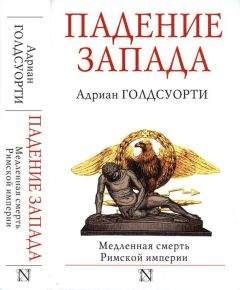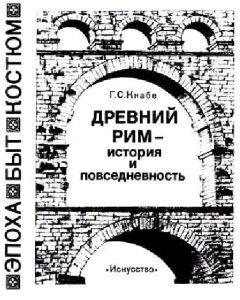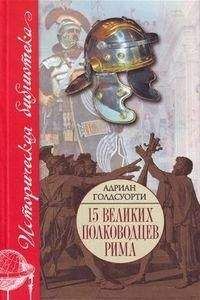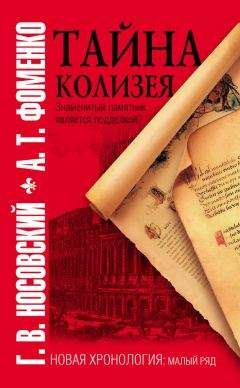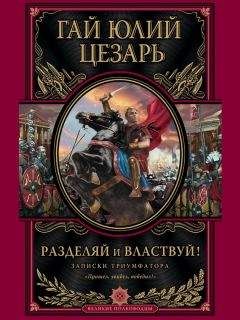389
В целом о его карьере см.: Burns T. Rome and the Barbarians, 100 ВС — AD 400. Baltimore, 2003. P. 338—339; по поводу дискуссий о феномене, чье положение колебалось между племенным вождеством и старшими командными постами в римской армии, см.: Drinkwater J. The Alamanni and Rome 213—496: Caracalla to Clovis. Oxford, 2007. P. 145-176.
Young G. Rome's Eastern Trade. International Commerce and Imperial Policy, 31 ВС — AD 305. London; New York, 2001. P. 86-88, 126— 130: см. также: The Roman Eastern Frontier… P. 33—34.
О пилах см.: Alison, Mosella. II. 361—363, а также: Wilson A. Machines, Power, and the Ancient Economy // JRS. Vol. 92. 2002. P. 1—32, особ. см. 15—17.
Что касается сельского населения, краткий обзор вопроса см.: Heather P. The Fall of the Roman Empire: A New History. London, 2005. P. 110—116, где справедливо указывается на новаторский труд Ж. Чаленко: Tchalenko G. Villages antiques de la Syrie du Nord. T. 1—3. Paris, 1953— 1958; также немало полезного о сельском хозяйстве в этот период можно узнать в книге: Banaji J. Agrarian Change in Late Antiquity: Gold, Labour, and Aristocratic Dominance. Oxford, 2001, а также: WhittakerC, Garnsey P. Rural Life in the Later Roman Empire // САН. 2nd ed. Vol. XIII. Cambridge, 1998. P. 277—311, где также выдвигаются аргументы против представлений об этом периоде как времени упадка. Поскольку эти исследования являются хорошим примером переосмысления более ранней, пессимистической оценки экономической жизни этого периода, необходимо напомнить, что наши свидетельства очень ограниченны и всегда следует проявлять осторожность.
См.: Ward-Perkins В. The Cities //САН. 2nd ed. Vol. XIII. P. 373-382.
Paulin. Vita Ambr. 31; о дискуссии по этому поводу см.: Williams, Friell (1994). P. 131 — 137, более детально — McLynn N. Ambrose of Milan: Church and Court in a Christian Capital. Berkeley, 1994.
Cod. Theodos. XVI. 1. 2, цит. по: Mitchell S. A History of the Later Roman Empire ad 284—641. Maiden; Oxford, 2007. P. 247—248. (Если быть точнее, ссылка должна быть дана на Cod. Theodos. XVI. 1. 2рг — 1.2. 1. — Примеч. пер.)
Williams, Friell (1994). P. 47-60.
См.: Hunt D. The Church as a Public Institution // САН. Ed 2nd. Vol. XIII Cambridge, 1998. P. 240-250.
О синагогах см.: Mitchell (2007). Р. 235—237.
О взаимоотношениях Амвросия и Феодосия см.: Williams & Friell (1994). P. 64-65, 68-70; Mitchell (2007). P. 248-250.
Kelly Ch. Emperors, Government and Bureaucracy // САН. 2nd ed. Vol. XIII. P. 153—156; Lenski N. The Failure of Empire: Valens and the Roman State in the Fourth Century AD. Berkeley, 2002. P. 86—97, 142—143.
Greg. Nyss. De Deitate Filii et Spiritus Sanctis// MigneJ.-P. Patrologia Graeca. 46. 557—558.
Представление о диспутах того времени можно получить в работе: Chadwick H. Orthodoxy and Heresy from the Death of Constantine to the Eve of the First Council of Ephesus // САН. 2nd ed. Vol. XIII. P. 561-600.
См.: Williams & Friell (1994). P. 119-125, Mitchell (2007). Р. 248-251, Fowden (2005). P. 548-554.
О проявлении могущества христианских лидеров и праведников как важном факторе обращения в христианство см.: Mac Mullen R. Christianizing the Roman Empire ad 100—400. New Haven, 1984; о церкви в целом см.: Chadwick H. The Church in Ancient Society: From Galilee to Gregory the Great. Oxford, 2001.
Об Ульфиле, Савве и христианстве у готов см.: Heather P. The Goths. Oxford, 1996. P. 60-62, 73-74, 85, 313; Wolfram H. The Roman Empire and its Germanic Peoples. Berkeley; Los Angeles; London, 1991. P. 69—70, 72—73, 76—79; Kulikowski M. Rome's Gothic Wars. From the Third Century to Alaric. Cambridge, 2007. P. 107—111, 118—122; Greatrex G. The Gothic Arians after Theodosius (to Justinian) // Studia Patristica. Vol. 34. 2001. P. 73—81; Bums T.S. Rome and the Barbarians, 100 ВС —AD 400. Baltimore, 2003. P. 337-338, 368-369.
Zosim. Hist. nova. V. 26. 5.
Orient. Commonit. II. 184.
О «Notitia Dignitatum» см.: Jones A. H.M. The Later Roman Empire: A Social, Economic and Administrative Survey. Vol. II. Oxford, 1964. P. 1417—1450, а также подборку статей в: Aspects of the «Notitia Dignitatum» / Eds. R. Goodburn & P. Bartholomew. Oxford, 1976 (BAR Supplementary Series, 15), и работу М. Куликовского: Ku/ikowski M. The «Notitia Dignitatum» as a Historical Source // Historia. Bd 99. 2002. P. 358— 377. «Notitia Dignitatum» / Hrsg. O. Seeck. 1876 остается одним из наиболее доступных изданий, но см. также: La «Notitia Dignitatum»: Nueva Ediciyn Critica у Comenatrio Histyrico: Nueva Roma 25 (2005), где имеются куда более информативные цветные вклейки.
Что касается щитов, см.: Grigg R. Inconsistency and Lassitude: The shield Emblems of the «Notitia Dignitatum» //JRS. Vol. 73. 1983. P. 132— 142.
См.: Matthews J. Mauretania in Ammianus and the «Notitia» // Aspects of the «Notitia Dignitatum» / Eds. R. Goodburn & P. Bartholomew. Oxford, 1976 (BAR Supplementary Series, 15). P. 157—186.
См.: Tomlin R. «Notitia Dignitatum omnium, tarn civilium quam militarium» // Ibid. P. 189—209; о проблеме назначения нескольких человек на один и тот же пост в Египте см.: JonesA.H.M. The Later Roman Empire: A Social, Economic and Administrative Survey. Vol. I. Oxford, 1964. P. 393; даются отсылки на издание: The Abinnaeus Archive: Papers of a Roman Officer in the Reign of Constantius II / Eds. H. Bell, V. Martin, E. Turner & D. van Berchem. Vol. 1. Oxford, 1964.
Предположение, будто «наш» вариант «Notitia Dignitatum» был подготовлен в штабе магистра пехоты в Западной империи, см. работу Дж. Манна: Mann J. What was the «Notitia Dignitatum» for? // Aspects of the «Notitia Dignitatum» / Eds. R. Goodburn & P. Bartholomew. Oxford, 1976. P. 1-9.
О численности см. дискуссию в издании: Treadgold W. Byzantium and its Army, 284—1081. Stanford, 1995. P. 43—64. Агафий Миринейский, писавший в 580-х годах, утверждает, что в прежние времена армия насчитывала 645 тысяч человек (Agath. V. 13. 7—8); о структуре армии в целом см. работу: Elton H. Military Forces //The Cambridge History of Greek and Roman Warfare / Ed. P. Sabin, H. Van Wees, M. Whitby. Vol. II. Cambridge, 2007. P. 270-309.
См. в целом: O'Flynn J. Generalissimos of the Western Roman Empire. Alberta, 1983. P. 1—24, Williams S., Friell G. Theodosius: The Empire at Bay. London, 1994. P. 143—158, Burns T. Barbarians within the Gates of Rome: A Study of Roman Military Policy and the Barbarians, ca. 375—425 A.D. Bloomington, 1994. P. 148—182, а также: Matthews J. Western Aristocracies and Imperial Court: AD 364—425. Oxford, 1975. P. 253—283.
Перечень источников, повествующих о данном эпизоде, см. в работе: Greatrex (7., Lieu S. The Roman Eastern Frontier and the Persian Wars. Pt 2. AD 363-630. London; New York, 2002. P. 17-19.
О происхождении Алариха и его мятеже см.: Kulikowski М. Rome's Gothic Wire. Baltimore, 2007. P. 156-158, 176-177, 188, Wolfram H. The Roman Empire and its Germanic Peoples. Berkeley, 1997. P. 89—94 Heather P.J. The Goths. Oxford; Cambridge, 1996. P. 138—146, а также: idem. Goths and Romans, 332-489. Oxford, 1991. P 183-188, 193 и далее; о роли «варваров» в армии см.: Liebeschuetz W. Barbarians and Bishops: Army, Church, and State in the Age of Arcadius and Chrysostom. Oxford, 1990. P. 7-88.
Zosim. V. 4-8.
Kulikowski (2007). Р. 166-168, Bums (1995). Р. 158-163, O'Flynn (1983). Р. 27—38, и J. Bury, History of the Later Roman Empire from the Death of Theodosius I to the Death of Justinian, Vol. 1 (1958). P. 115— 121.
Zosim.V. 11, а также: O'Flynn (1983). P. 36—37, Williams & Friell (1994). P. 148-150.
Zosim. V. 13—18; см. также: Kulikowski (2007). Р. 168—169, Bums Т. Barbarians within the Gates of Rome: A Study of Roman Military Policy and the Barbarians, ca. 375—425 A.D. Bloomington, 1995. P. 168—178, Bury J. History of the Later Roman Empire from the Death of Theodosius I to the death of Justinian. Vol. 1. New York, 1958. P. 126—137.
Kulikowski (2007). Р. 170-171, Burns (1995). Р. 178-193; OTlynn (1983). Р. 37-42.
Оценку численности готов в 400 тысяч человек и упоминание тридцати соединений в армии Стилихона см.: Zosim. V. 28; обсуждение кампании см.: Kulikoswki (2007). Р. 171, Wolfram (1997). Р. 96—97, & Burns (1995). Р. 197—198; в п. 53. Р. 356 рассматривается численность римлян и высказывается предположение, что Стилихон мог иметь всего лишь 7500 человек — солдат регулярных войск, а также несколько тысяч ауксилиариев. О падении цен на рабов см.: Oros. VII. 37. 13-16.
Zosim. V. 27, а также: Todd M. Roman Britain. 3rd ed. Oxford, 1999. P. 208—209, Bury (1958). P. 169—171, O'Flynn (1983). P 42—44, 56, Jones (1964). P. 185-186, и Burns (1995). P. 208-214.
См.: Kulikowski M. Barbarians in Gaul, Usurpers in Britain // Britannia. Vol. 31. 2000. P. 325—345; Goffart W. Barbarian Tides: The Migration Age and the Later Roman Empire. Philadelphia, 2006. P. 73—118, Burns (1995). P. 203—209, а также: Birley A. The Roman Government of Britain. Oxford, 2005. P. 455—460; Дж. Дринкуотер высказывает правдоподобное предположение, что среди интервентов могло быть несколько отрядов алеманнов (Drinkwater J. The Alamanni and Rome 213-496: Caracalla to Clovis. Oxford, 2007. P. 323-325).
Burns (1995). P.214-217, Kulikowski (2007). P 172-173, и O'Flynn (1983). Р. 55—59;
Williams&Friell (1994). P 157-158,0'Flynn (1983). Р. 59—62, Burns (1995). Р.215-223, Matthews (1975). Р. 270—283; Blockley R. The Dynasty ofTheodosius//CAH. 2nd ed. Vol. XIII. Cambridge, 1998. P. 121-125.
Hieronym. Comm. In Ezech. I praef.
Oros.VII.43. 5.
